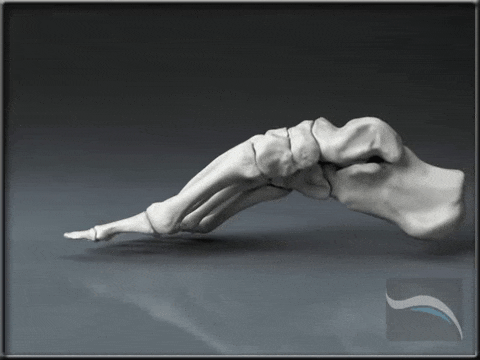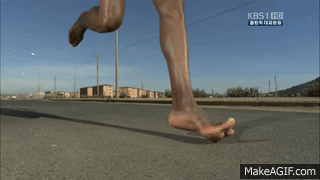
3.2 Causes of OP: Weak arches
OP EXPLAINED
1. Osteitis Pubis: an introduction
1.1 Symptoms and Stages of Osteitis Pubis
1.2 OP Diagnosis guide
1.25 Should I get a MRI/CT/Xray scan for OP?
2.0 Overworked Adductors: The true cause of OP
2.1 Rest: The worst treatment for OP
2.2 OP mechanics in detail
3.0 Faulty firing patterns: Weaknesses that cause OP
3.1 The Deep Front Line
3.2 Causes of OP: Weak arches
3.3 Causes of OP: Weak glutes
3.4 Causes of OP: Poor core activation
3.5 Causes of OP: Dysfunctional pelvic floor and Sacroilliac Joint
3.6 Causes of OP: Dysfunctional oblique chains
3.7 Causes of OP: The balance and coordination system
Refresh your understanding:
-
Osteitis Pubis is caused when adductors are overworked over time.
-
Your personal biomechanics (the patterns that fire your muscles/move your joints) lead to the OP mechanics (hip drop, pronation, anterior pelvic tilt, locked SIJ and knocked knees) that cause OP.
-
Your personal biomechanics must be corrected to stop overloading your adductors.
-
The Deep Front Line (DFL) is the foundation of your body, responsible for the stability and alignment of your entire body. The DFL relies on 6 biomechanical/functional systems (arches, glutes, core, SIJ/Pelvic Floor, Oblique Chains, Balance).
-
Dysfunction/lack of coordination in and between these 6 systems leads to the poor OP mechanics that cause OP.
We understand that OP relates to the dysfunction and collapse of the Deep Front Line (DFL) leading to poorly aligned movements off Centre of Gravity (COG) which overload your adductors.
FEET: GROUND FLOOR FOUNDATION!



Your foot is the very base of your body, the point of contact that keeps you connected and grounded. Foot stability is fundamental.
Your feet are the very base of your DFL/COG. If you do not align and engage your arch muscles correctly, then your base becomes unstable, and the other 5 functional systems struggle to engage and fire. Without a strong base of support the rest of your body overworks, tightening and bracing to attempt to compensate.
FEET: THE ADAPTABLE FOUNDATION
What makes the feet and arches so interesting is that they are not a solid, rigid structure. As humans we are constantly moving, shifting and changing direction. We walk on different shaped surfaces, some soft, some hard. We change and contort the shape of our body, reaching, bending, twisting and turning. All the while expecting our feet to still magically keep us balanced and connected to the ground. The human body is constantly changing so the base must constantly change to maintain support. The foot is perfectly designed to do this.

Made up of 26 floating bones the foot is not a solid structure like your femur. It can mould and remould its shape, adapting and changing to the demands of its environment. Walking on sand? The foot can become rigid, digging in and creating stability in the unstable sand. Walking on concrete? The foot becomes soft, flattening and absorbing load and dampening the shock of your body weight.
This job is extremely important. At running speed your foot strikes the ground with a force of approximately 8 times your body weight. Let’s put that into perspective. If you weigh 70kg, that’s 560kg into one foot with every step. Your foot must dampen, absorb and direct that load accurately up and through the skeleton. This will allow for the even distribution of shock and load through the entire body (through the DFL/COG). Your foot changes its very shape to make sure this happens.
OVER PRONATION AND OVER SUPINATION: A FAILURE TO STABILIZE AND ABSORB SHOCK
Over pronation/supination represents a failure of your foot to effectively mould, shape and absorb the load of your foot when it strikes the ground through movement.


In the case of over pronation the foot is too floppy/flexible. It collapses like a sack of bones giving no shock absorbing/dampening of your body weight. The collapse of your arch then encourages the collapse of your knee inwards (knocked knees). This throws you out your COG/DFL, forcing your adductors to contract hard to help pull you back into alignment and absorb the load of your body weight.
* Bowed knees are also related to over pronation. Less common, the bowed knee leads to landing on the outside of the foot at a greater angle, causing the foot to pronate/roll in with greater speed/force/load.
Over supination provides the opposite problem. The foot is too rigid and doesn’t change its shape. Think about smacking a solid steel pole into a brick wall. The steel pole has no flexibility, so when you make contact the vibrations and shock go through your body. This is essentially what over supination is. The foot fails to roll in (pronate) at all. Little to no shock is absorbed by the foot, and all the vibrations are shunted up the body. In OP the adductors take the load.
Over supination is rare, but it often leads to more severe OP symptoms as little to no load is absorbed by the arches on foot strike.
PERFECT PRONATION: ABSORBING LOAD WHILST MAINTAINING STABILITY
Walking and running relies on pronation to help spread, elongate and rotate the bones in the foot, ankle, shin and hips. Pronation is a dampening movement, a rolling wave of cushioning that starts at the foot and continues up through the body. When performed correctly the load of a foot strike (8 times your body weight) can be evenly and effectively distributed across the entire body (DFL).

Look closely at our image above (yes that is a real person running!). As the foot strikes the ground you can see how the entire foot spreads and absorbs the runner’s body weight. If you really focus on the ankle, you will see it rolls in slightly. It directs its load into the flattening/spreading occurring in the foot. This is perfect pronation. The load is being directed into the foot which flattens, spreads and absorbs this load whilst using it to connect/ground to the earth.
Too floppy or too rigid and this load cannot be absorbed efficiently. Degenerative, arthritic knees and hips, lower back pain and, of course, OP are all possible complications of poor stability and control at your arches!
THE DEEP TOE FLEXORS: THE MUSCLES/FASCIA WHICH CONTROL YOUR PRONATION!


The deep toe flexors are a group of muscles which sit underneath your thicker, more powerful calf muscles. The deep toe flexor muscle group has a direct tendon or fascial attachment to almost every one of the 26 floating bones in the foot. This essentially means that the deep toe flexors can change the entire shape of the foot.
As your foot strikes the ground it is the job of the deep toe flexors to control the ‘speed and rate of pronation’. As your foot is rolling in, the deep toe flexors control how much you pronate depending on the surface you are walking/running on. It tightens the arch of the foot when you are walking in loose sand. It softens when walking on concrete.
Importantly it controls the speed of pronation. If you’re sprinting it will stiffen the arch, ensuring the force and speed of your foot strike doesn’t force you to roll in too far into over pronation. Your deep toe flexors dampen, control and angle the force of your foot strike up the DFL where it can be evenly dispersed across the body.
DEEP TOE FLEXORS: THE DFL STARTS HERE


The deep toe flexors communicate and prepare other parts of the DFL for the load it's about to receive.
Let’s say you are running on a slanted running track, placing more pressure on your right leg than your left. The deep toe flexors will register the extra pressure on the outside of the right foot due to the slant. It will communicate and tell the gluteus medius (part of the glute system) to expect the hip to swing out. Importantly the glute system will understand they need to engage/increase their activation/tension to absorb this extra load, preventing an excessive hip drop.
This ensures the body can efficiently prepare and control load rather than brace, contract and react to force. This is the difference between isolated and functional strength. The gluteus medius does not have the strength to pull you out of a hip drop. But if engaged pre-emptively it can prepare. It can position itself and borrow strength from the other functional systems to control the pelvis. The gluteus medius knows what’s coming so it’s ready for the extra load!
Weak arches/inactive deep toe flexors do not prepare the rest of the body. The force of a foot strike simply charges up the body, expecting higher structure (such as adductors) to over brace and compensate for the lack of control and activation in the arches.
FIXING OP STARTS AT THE GROUND FLOOR
The stability, alignment and balance of your entire body relies upon the stable base your arches can provide. With balanced, active arches you can continue to distribute load evenly across your DFL/COG, as opposed to concentrating it in your adductors/pubic bone. It only makes sense that your rehabilitation should start by first re-establishing your arches, rebuilding your stability from the ground up!
